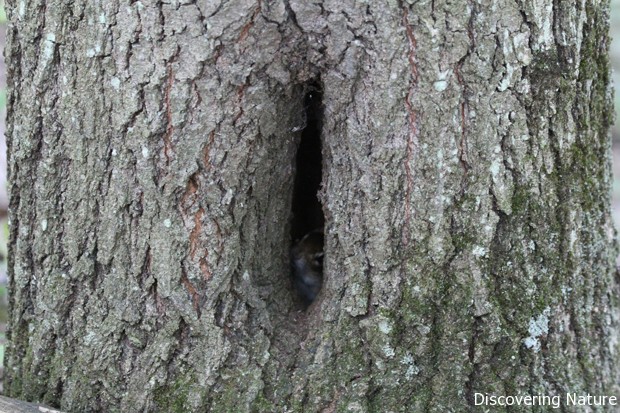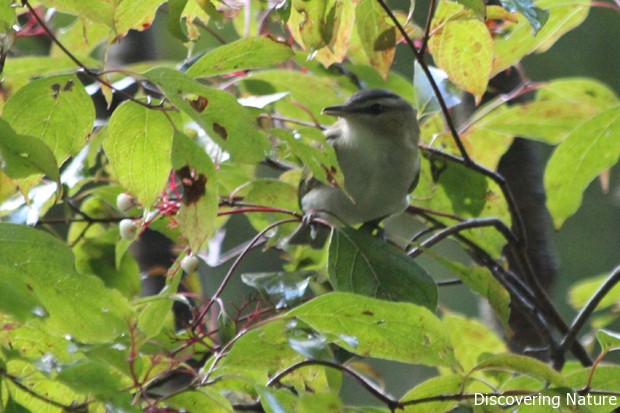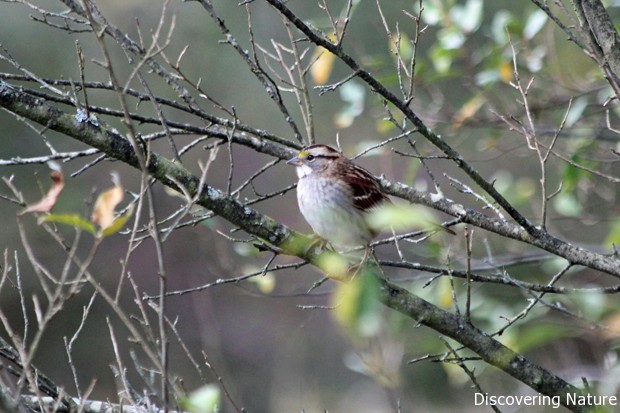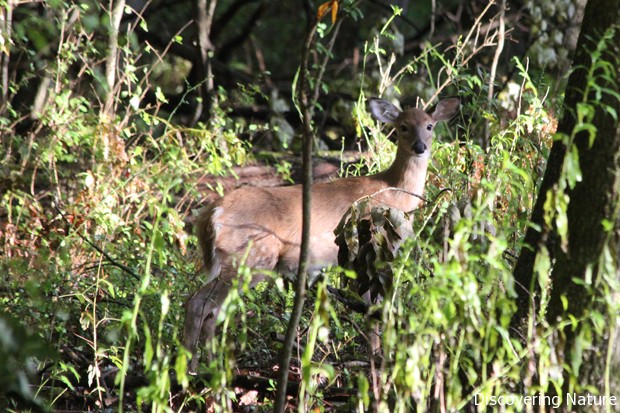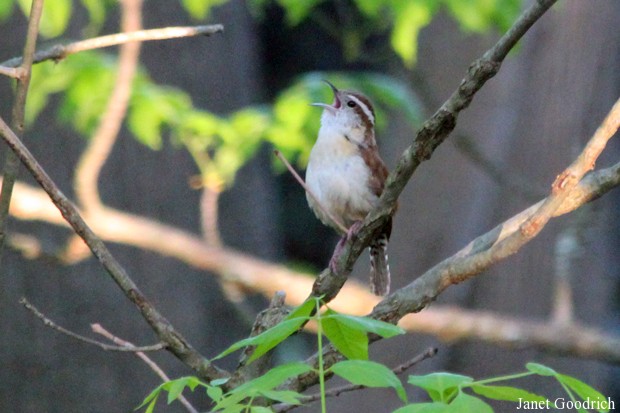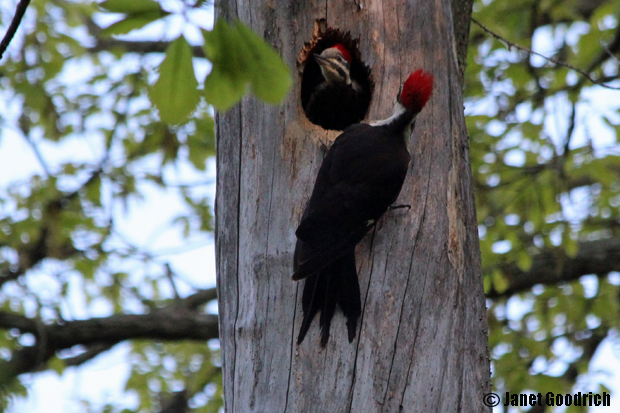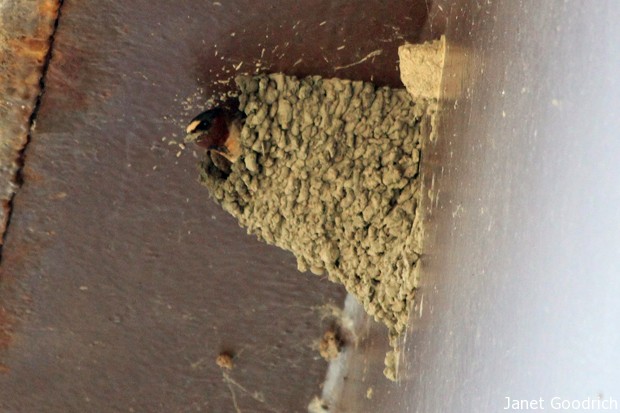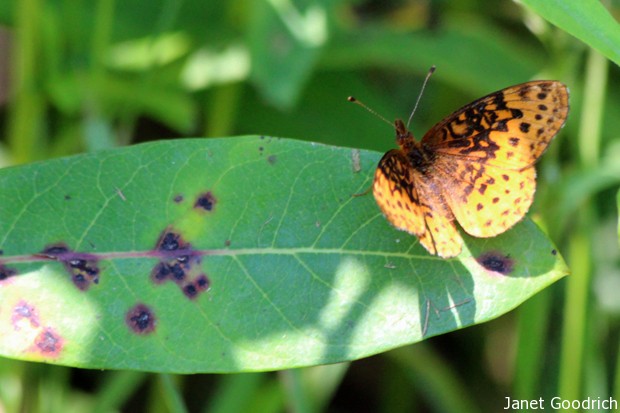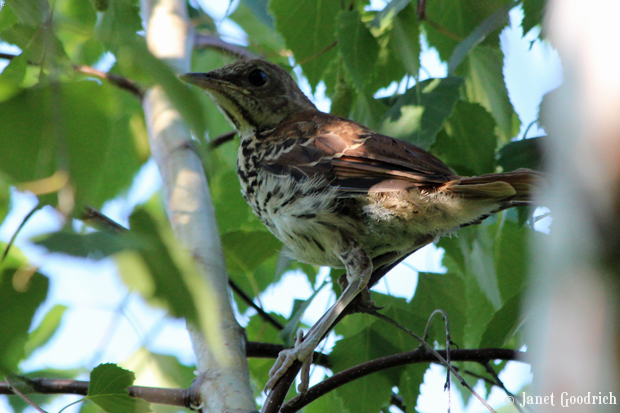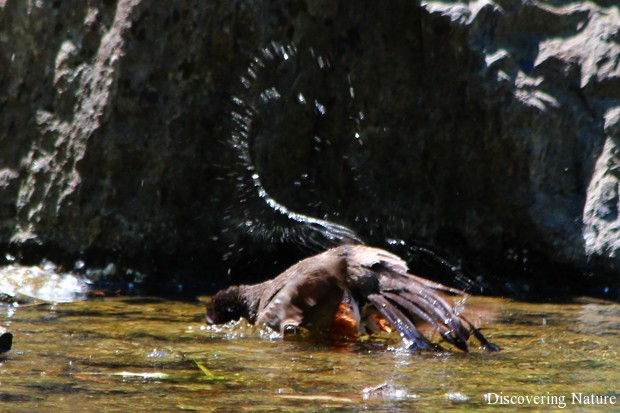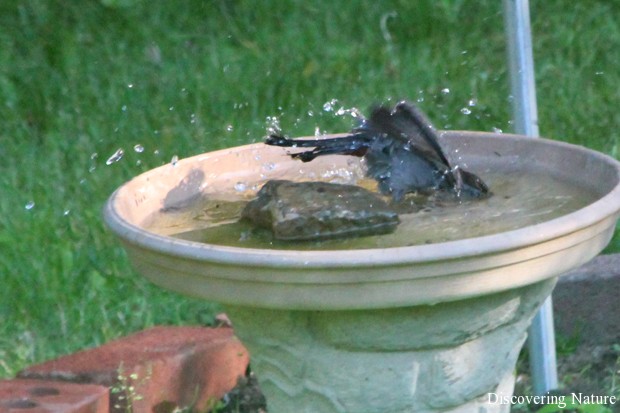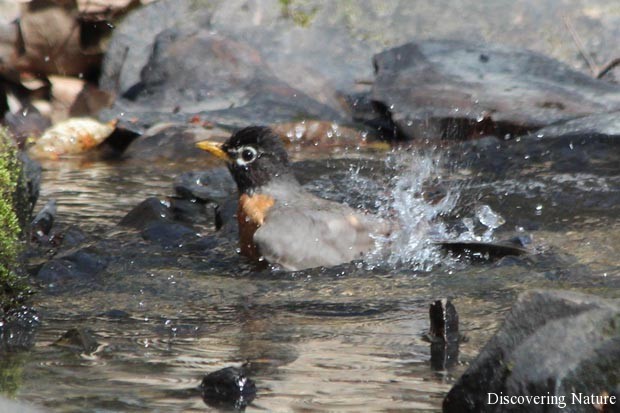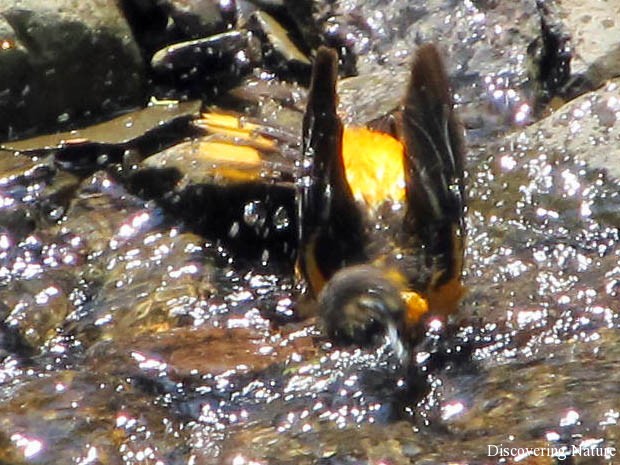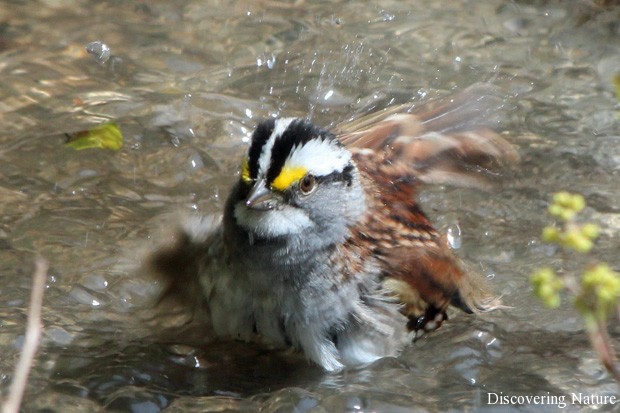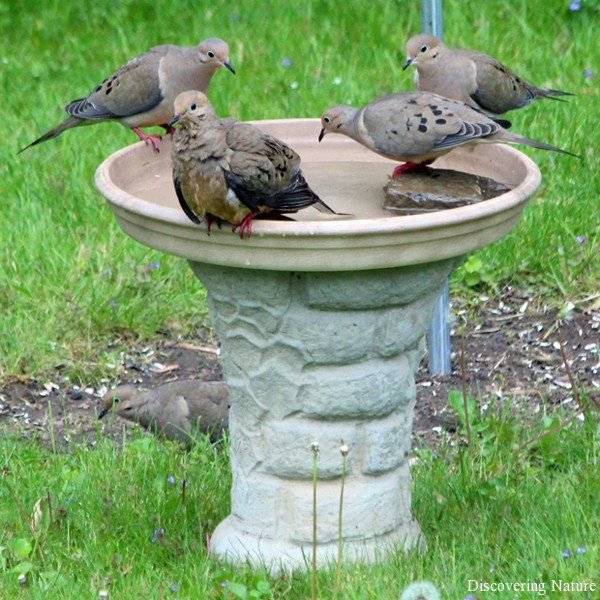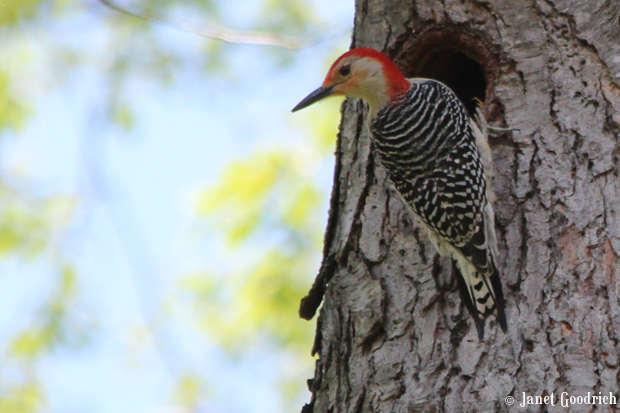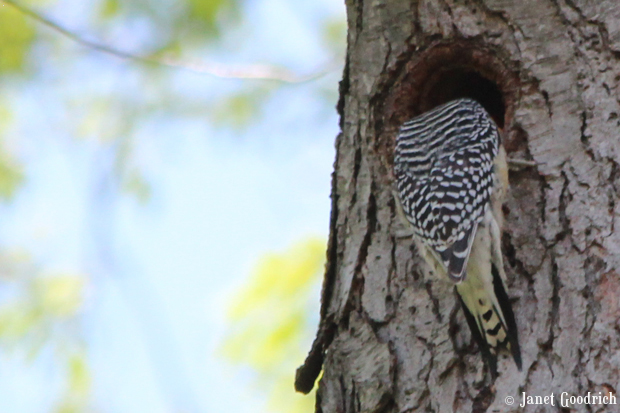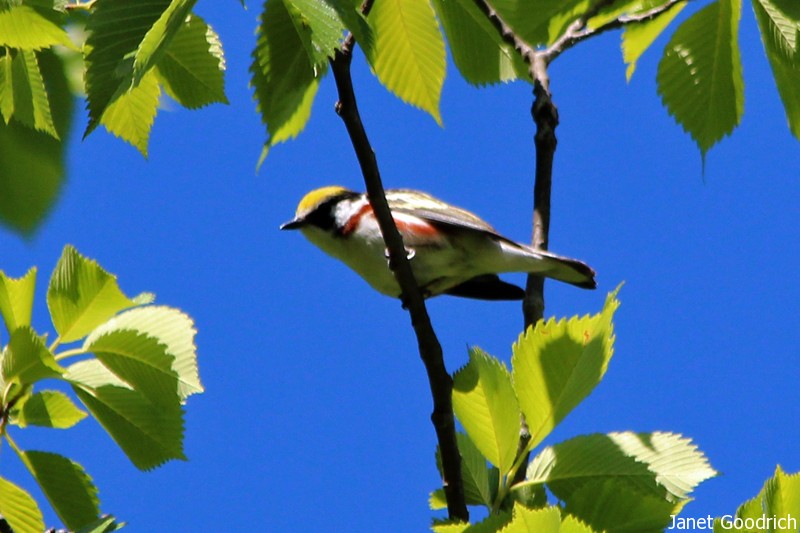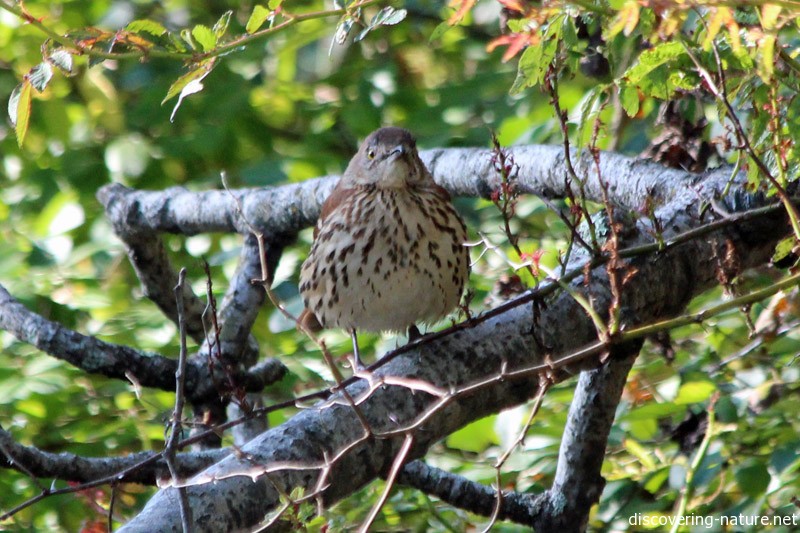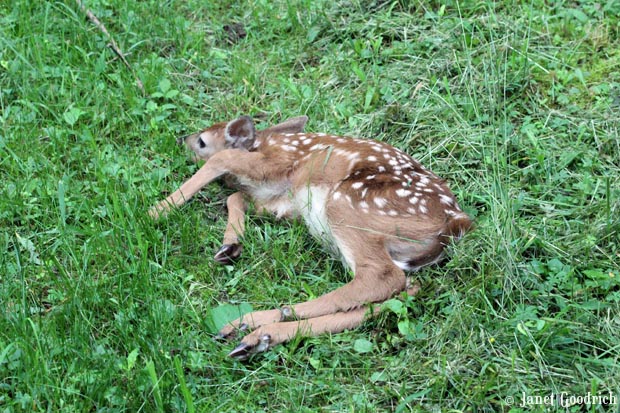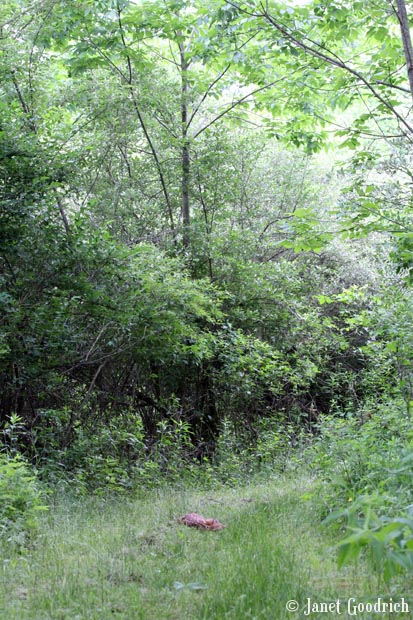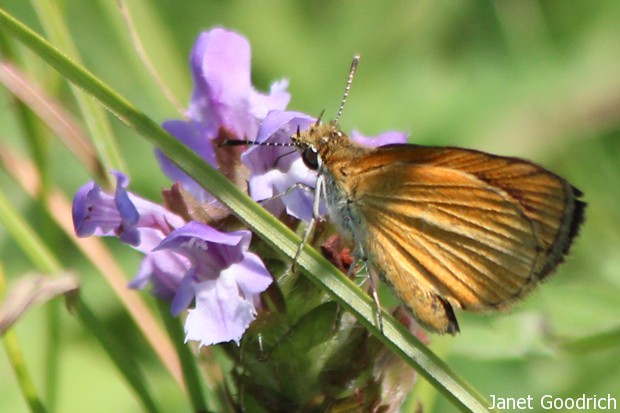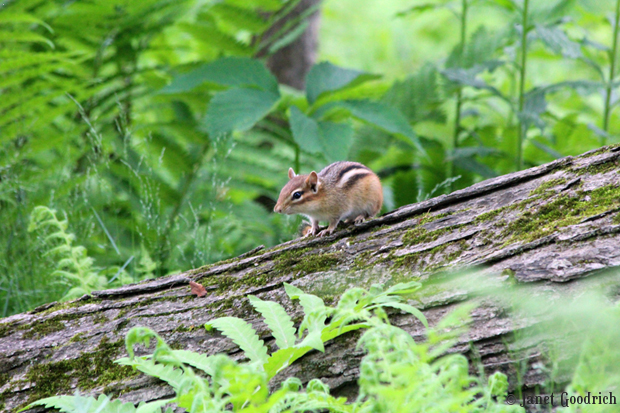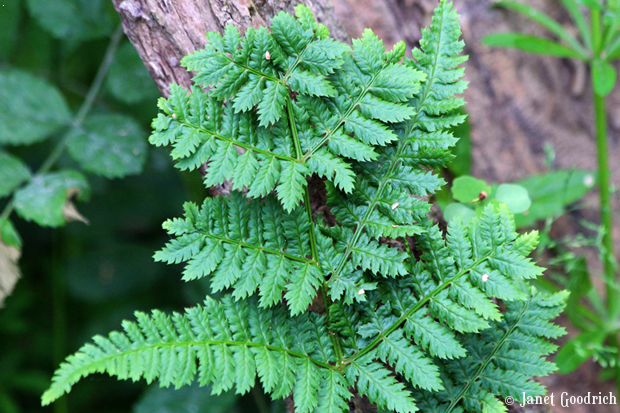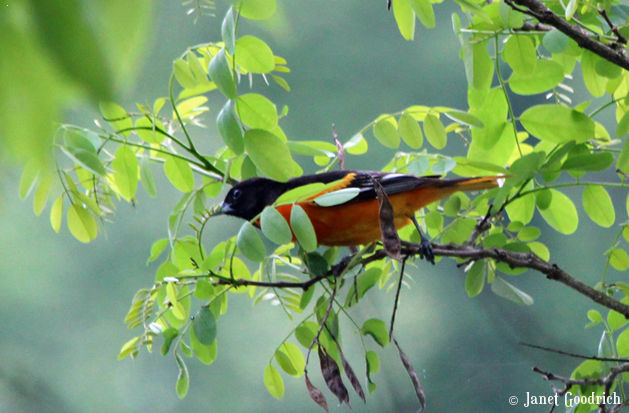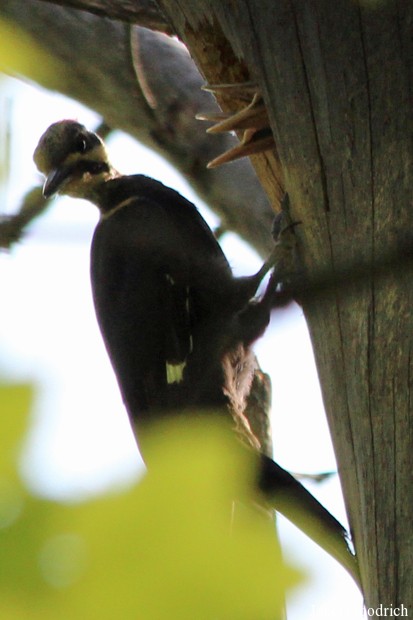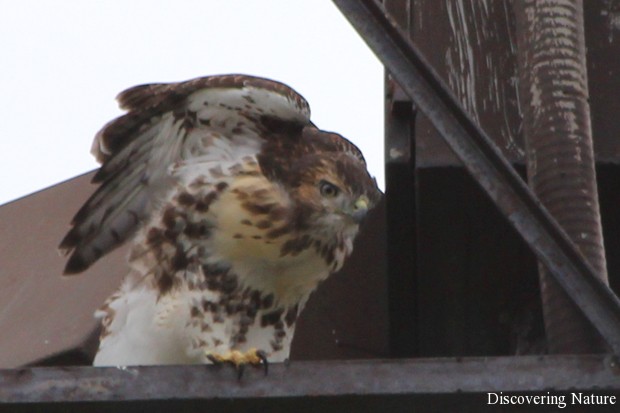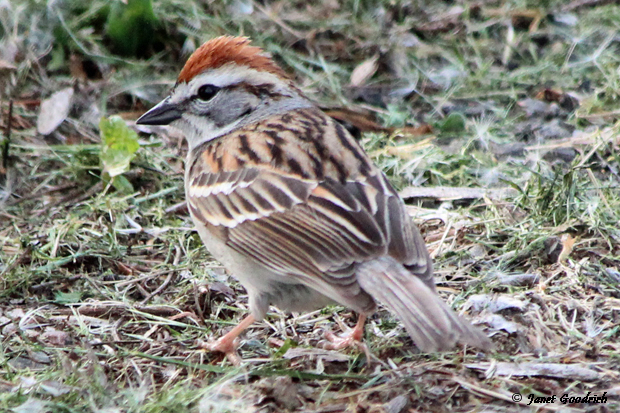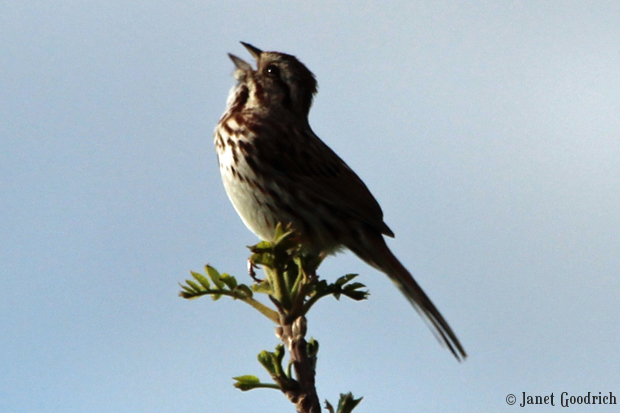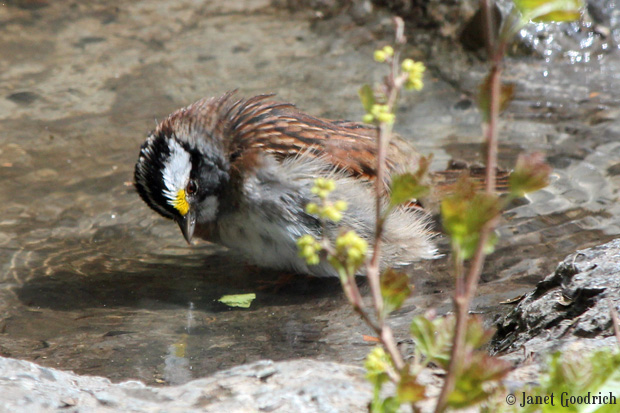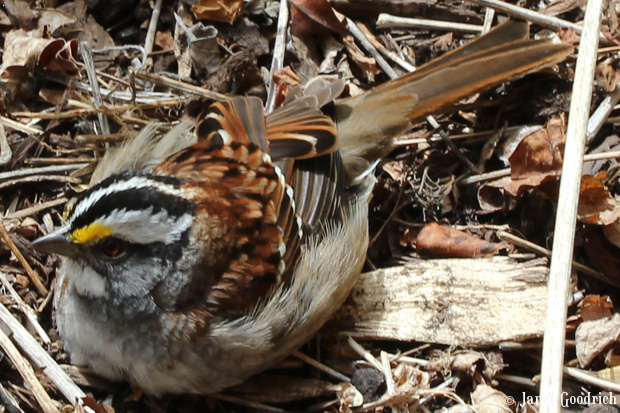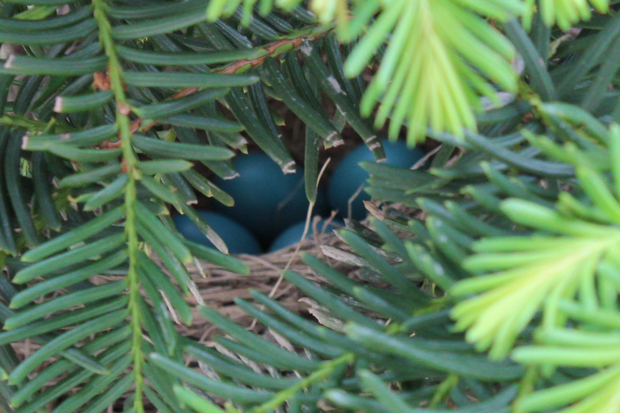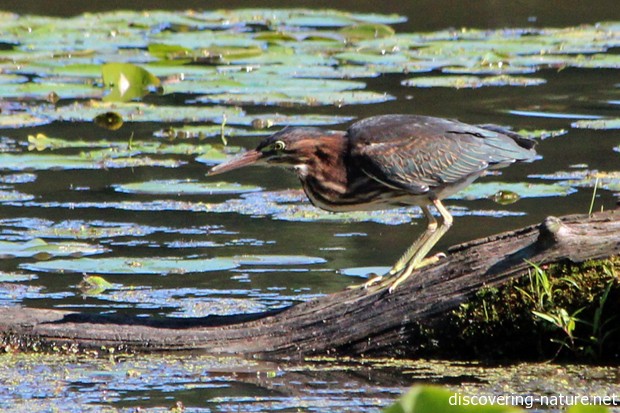-
Autumn state of mind
The woods are so much quieter now than they were in the spring and early summer that it’s easy to lose the sense of expectation. But it’s a good exercise in faith to remain attentive; invariably we are rewarded with wonders large and small.
It was a little eerie on a recent walk in Ithaca. My husband and daughters and I were coming to the end of a stroll on an overcast day when our paths intersected with some characteristically cheerful sounding chickadees. My daughter, the bird-whisperer, sounded her chickadee call to attract them, and it seemed they were responding with more and more vocalization. Then we rounded a corner and saw the silent silhouette of a hawk.
No doubt the chickadees were sounding the alarm. It may have been the redtail that haunts Sapsucker Woods, but it seemed a little small for a redtail. My guess is it was a broadwing. It clutched a chipmunk in its talons.
How typical of us humans to think that we were controlling the scene, when all along a life and death drama that had nothing to do with us was playing itself out.
Another hawk has been making unwelcome appearances in our area: a Cooper’s hawk. Our feeder is situated next to an evergreen so that the birds have cover, but I think this hawk is attracted by the busy chatter of the goldfinches and the two or three chipmunks who feed on the ground beneath. We haven’t seen it successfully catch anything yet, but here it is perched in the middle of the food court.
No wonder the chipmunks hide!
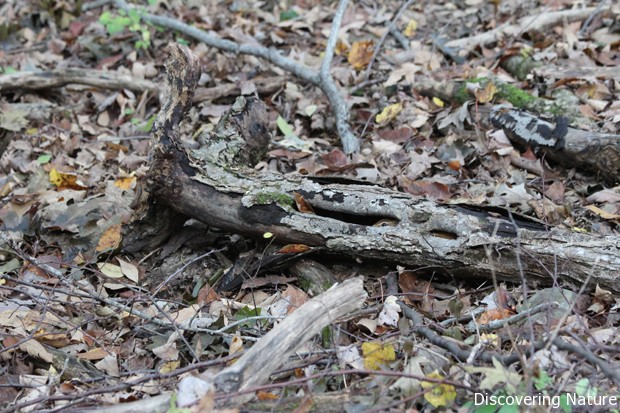
See it in the log? I’ve seen some tiny warblers in recent walks in the woods, but few have rewarded me with photo-ops. I did manage to get a shot of this one, tentatively identified as a Nashville warbler.
It was a treat to see this red-eyed vireo feeding with some chickadees, too. Vireos are so much more easy to hear than to see; they are so like the leaves themselves.
The white-throated sparrows are coming through on their way southward. We have four or five of them hanging around our yard this week, but this one was spotted in a nearby preserve.
Last but not least, the deer have been everywhere, and they have actually seemed to pose for me.
-
Summer sightings
Today on the way out of a park, Younger Daughter and I stopped to scrape a dead oriole off the road and place it in a shady bed of clover off to the side. It was our small acknowledgment of beauty utterly wasted.
But as Ma in the Little House books is fond of saying, there’s no loss without some small gain. Glancing up as we walked back to the car, we spotted some cliff swallow nests on the bridge over the river.
There were several of them along the bridge’s eaves. We’ll have fun watching their story unfold.
Younger Daughter loves streams, and while she played in the water I puttered on the edge with my camera.
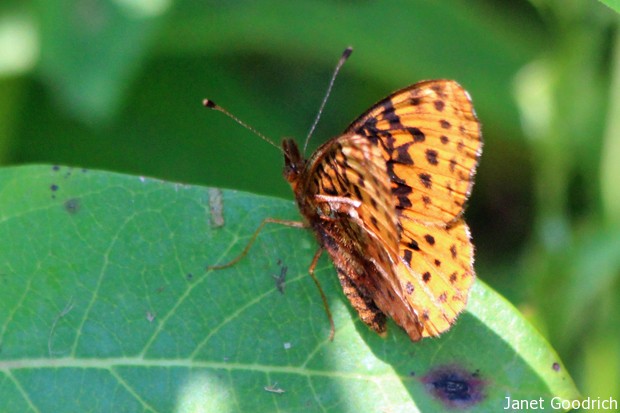
A meadow fritillary, I think — about 2 inches across with wings open. 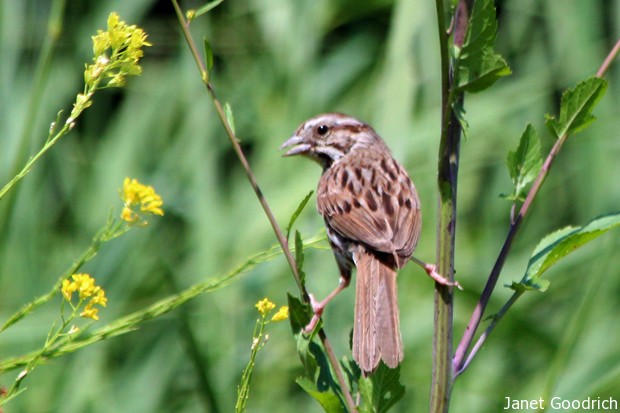
One of several watchful song sparrows. 
I believe this is mayweed, based on the leaves thin “yarrow-like” leaves. All in all a very nice time together. Younger Daughter caught minnows and threw rocks for the dog while I wandered and sweated. I’m not at my best when it’s in the nineties out, but I felt rewarded by these beauties.
-
Bathing Beauties
There is debate about many things related to bird behavior: how, and whether, they “teach” their young; how they chart their migratory courses; why they do this or that. But when I see a bird taking a bath, there’s no question in my mind that they are having a blast! The only creatures who like to play in the water more than my daughters are the birds.
-
Mighty Mouse
On Tuesday we went to visit the site of a suspected red-bellied woodpecker nest cavity on one of our haunts. I wondered if we might see some nestling activity.
I took these pictures on May 11, and the bird appeared to be feeding young. We hadn’t been able to observe the site again, and I knew that by this time, there was a good chance that any possible woodpecker nestlings had fledged.
Turned out I was right. We saw nary a woodpecker… but this tufted titmouse came flying briskly out of the woodpecker hole!
I’m not sure if the titmouse is nesting in the woodpecker’s former home, or if it was just foraging for insects in there. We’ll have to check in again soon to see what we can find out.
It’s a brave looking little bird, isn’t it? — Looks like it feels ready for anything.
-
Morning magic
This morning I took an early morning walk in the woods. The air was alive with birdsong, and at one point I found myself lured up a trail by the voice of a brown thrasher. This is a bird I’ve just started noticing this year, and its unbroken chatter always makes me smile. It’s the first bird that’s ever tempted me to use the word “loquacious.”
I never did get my eye on the thrasher. But as I neared a bend in the trail, I heard a sudden, panicked snort, followed by thudding and swishing bushes. I’d started a deer.
Rounding the bend, I saw something that startled me: something brown and flattened-looking in the trail. A few steps closer, I saw spots. A fawn. It lay at an awkward angle, and I assumed it was dead. Wondering if I’d interrupted a coyote just starting its breakfast, I reached for my Mace (always carried, never used) and considered turning around. But what if it was not dead, only injured? I couldn’t walk away till I made sure.
A little closer, and I saw that it was breathing.
I remembered the stories I’d heard about fawns so conditioned to lie still where their mothers left them that they wouldn’t move out of the path of an oncoming combine. Horrible. Yet if these stories were true, it was no real wonder that the fawn didn’t move when I approached. I walked carefully past it, thinking the gentlest and most encouraging thoughts I could, and resisting the temptation to stroke its head. It remained motionless the whole time.
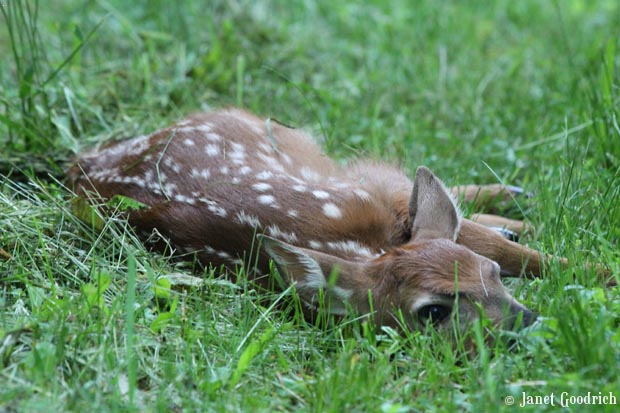
Using a zoom here -- I wasn't sticking my camera right under the little creature's nose. No word seems right to describe the experience.
Later, I read what I could find about white-tailed deer and their fawns (here and here, for starters). I felt reassured that this little fawn was just doing what white-tails do, right down to its awkward position in the grass. I read that the does leave their new fawns in places with low vegetation, and there they lie, heads flattened down as much as possible. The youngest ones remain motionless even when another animal comes close. If there are two or three fawns, the doe will hide them in separate places.
This morning, with only the combine stories in mind to support the notion that the fawn was behaving normally, I walked on down the trail and then waited a minute to see if the doe returned. She had made a wide circle, and through the brush on the other side of the trail from where she’d run away, she came haltingly.
That’s her, flaring her nostrils in another loud snort of alarm at the sight of me. Not wanting to bother this little family unit any further, I headed off.
I couldn’t help but notice the music coming from the surrounding woods. As a lullaby for a young deer, it was superior to any mobile I ever found for my daughters. I recorded a few of the songs, and the sound quality is all right though my video skills are dismal. (I wish I knew how to record sound without video.)
There was the thrasher, who continued endlessly with his one-sided conversation.
Somewhere, a veery sang — a bird I’ve never seen, but whose song I’ve come to recognize. To me, it’s a sound that belongs to secluded places.
And a thrush — I think a hermit thrush, but maybe a wood thrush — sang its lonesome and lovely song. At around the halfway point, the snorts of another startled deer (or two) that had spotted me can be heard.
There were other sights and sounds too, but the fawn was the highlight. One source I looked at said that fawns who survive their first week of life stand a good chance. I’m pulling for you, little one.
-
Walk at the Pond
The sun was out yesterday morning, and I urged the girls on in their schoolwork, dangling the carrot of a walk in the sun. They rose to the challenge, and we headed off in good time.
First to sound the alarm was this guy: “Humans! Humans!”
Apparently he was ignored, because just beyond him we saw a couple of green herons.
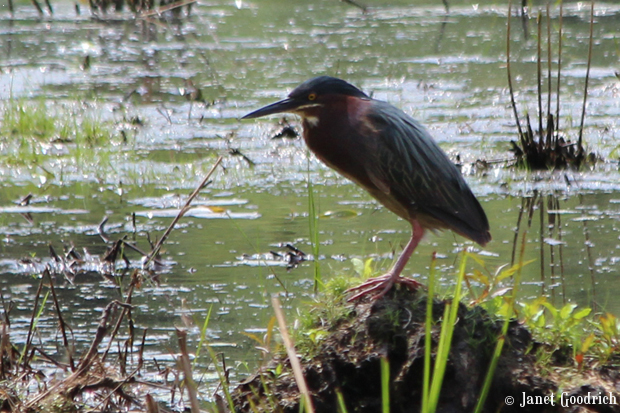
This one looked pretty typical... 
...till the wind blew and gave it a punk makeover. There was a whole cavalcade of geese camped out on the berm across the pond. They made an impressive racket as they took off. We could almost feel the wind from their beating wings.
There were some other water birds around too.
There were several great blue herons there — 4 or 5. They may be feeding young at the heronry down the river.
The bracken was particularly lush…
And there were some wildflowers around. Learning the names is helping me to feel more like I belong in this place.
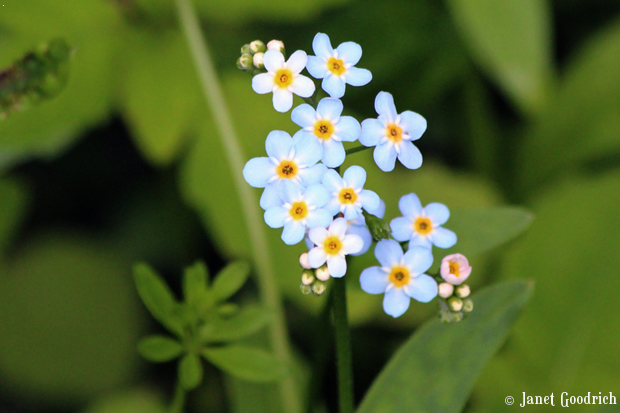
Forget-me-nots 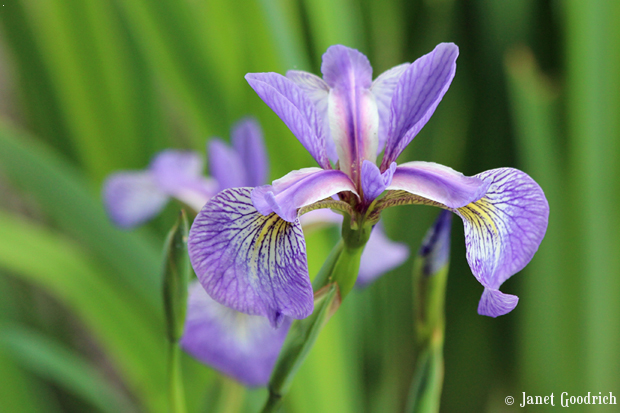
Blue flags 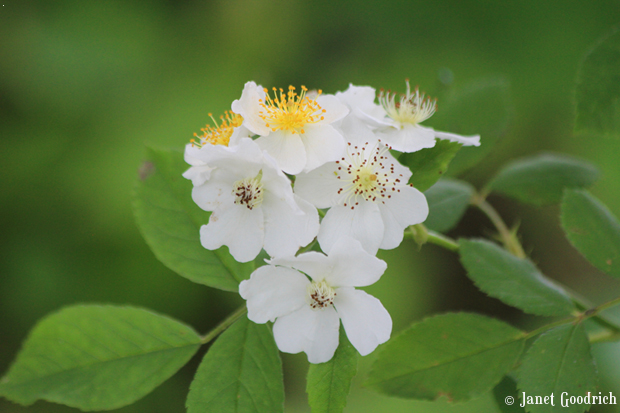
Bramble (I think) 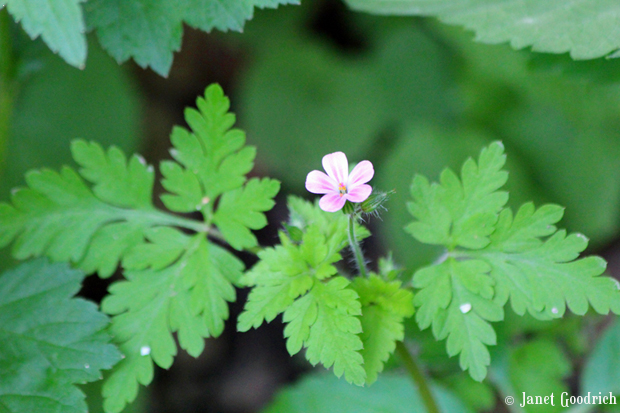
Mystery flower Back at the car, the oriole that usually hangs out in Old Man Willow was humming his way through lunch. I thought that the Burgess Bird Book named the oriole “Glory,” but it’s actually “Goldie.” I prefer Glory. It doesn’t get any more glorious than this colorful bird with his agreeable warble.
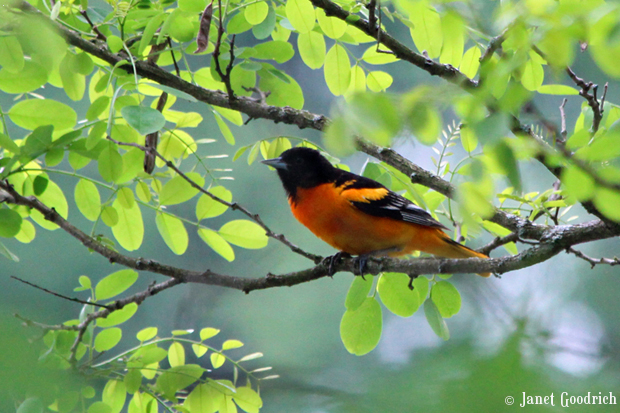
Glory the Oriole By then the sun was retreating behind a bank of clouds, so the flash of fire from Mr. Oriole was all the more welcome.
When we got home, Younger Daughter requested tree swallow coloring pages. Older Daughter requested a library book on caring for injured robins (for reasons I’ll share in a later post). I’ve been slacking on official nature journal pages, but I think we should probably get back into them. They’re not necessary for learning, I don’t think, and only sometimes are they an aid to seeing. But they do document the experiences of our various walks together. Someday I want the girls to have them to look back through. Once they learn the name of a flower or the habits of a bird, they will remember. But the particular treasures of particular walks may fade or get mixed up over time.
-
Sparrows
Sparrows are so “common” — little brown birds hopping in the periphery almost everywhere. But last year, it was this little chipping sparrow, who would come to the feeder and throw his head back in song, that jolted me into paying attention to birds.
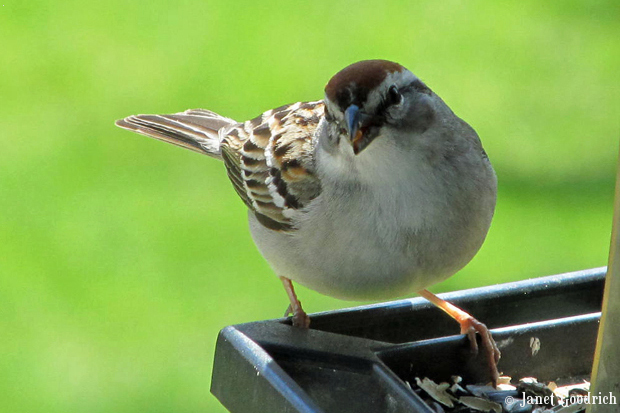 It’s so beautifully colored and marked, and so busy and sociable. Anna Botsford Comstock is quite emphatic in the Handbook of Nature Study about its helpfulness to humans by consuming garden pests, but even without such “utility” it’s appealing.
It’s so beautifully colored and marked, and so busy and sociable. Anna Botsford Comstock is quite emphatic in the Handbook of Nature Study about its helpfulness to humans by consuming garden pests, but even without such “utility” it’s appealing.Since then I’ve begun to distinguish different kinds of sparrows, and there is an amazing variety. Back in the winter, I noticed tree sparrows for the first time. They’re very similar in appearance to the chipping sparrows, but they stay all winter — the season so nearly bereft of color when it’s overcast, as it was when I snapped this.
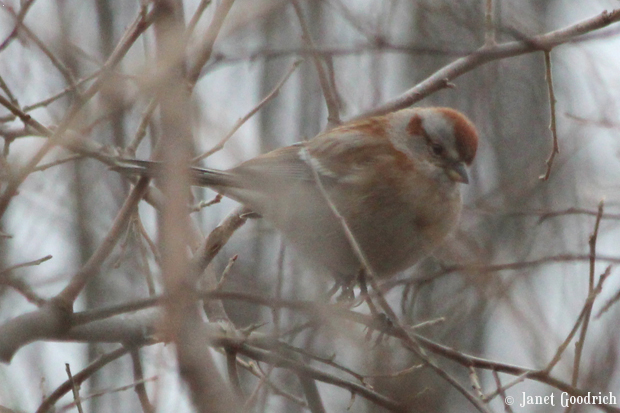 One of the first birds to break the winter silence was the song sparrow. Now that I’m aware of it, I hear it everywhere.
One of the first birds to break the winter silence was the song sparrow. Now that I’m aware of it, I hear it everywhere.I love the wholeheartedness — head thrown back, belting it out into the morning. Thornton Burgess names him “Little Friend.”
White-throated sparrows, which I’ve always associated with the Adirondacks, stayed here for a few weeks on their way back northward. Till this year I heard but never saw one. Their song is very high and sweet and lonesome, and I would have pictured a more diminutive bird. I think they’re beautiful with that dash of yellow and those crisp stripes. How could I have missed them before this year?
Just a few days ago, I saw another one that’s new to me: a white-crowned sparrow.
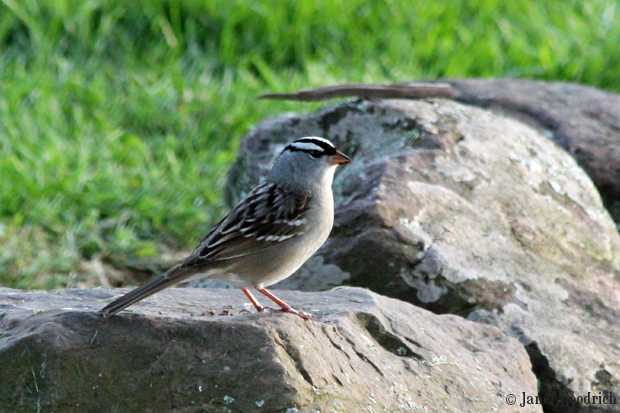 There are also English sparrows, seen everywhere from parking lots to barns to other birds’ nests. I don’t have a photo of one. And there are others that I haven’t seen yet that I have heard or can expect to see — swamp, vesper, and field sparrows, for instance.
There are also English sparrows, seen everywhere from parking lots to barns to other birds’ nests. I don’t have a photo of one. And there are others that I haven’t seen yet that I have heard or can expect to see — swamp, vesper, and field sparrows, for instance.So many varieties of “common.” I’m reminded of the passage in Zen and the Art of Motorcycle Maintenance where the writing teacher encourages a girl to break through writer’s block not by choosing a larger subject, but a smaller, more narrowly focused one:
He’d been having trouble with students who had nothing to say. At first he thought it was laziness but later it became apparent that it wasn’t. They just couldn’t think of anything to say.
One of them, a girl with strong-lensed glasses, wanted to write a 500-word essay about the United States. He was used to the sinking feeling that comes from statements like this, and suggested without disparagement that she narrow it down to just Bozeman.
When the paper came due she didn’t have it and was quite upset. She had tried and tried but she just couldn’t think of anything to say…
It just stumped him. Now he couldn’t think of anything to say. A silence occurred, and then a peculiar answer: “Narrow it down to the main street of Bozeman.” It was a stroke of insight.
She nodded dutifully and went out. But just before her next class she came back in real distress, tears this time, distress that had obviously been there for a long time. She still couldn’t think of anything to say, and couldn’t understand why, if she couldn’t think of anything about all of Bozeman, she should be able to think of something about just one street.
He was furious. “You’re not looking!” he said. A memory came back of his own dismissal from the University for having too much to say. For every fact there is an infinity of hypotheses. The more you look the more you see. She really wasn’t looking and yet somehow didn’t understand this.
He told her angrily, “Narrow it down to the front of one building on the main street of Bozeman. The Opera House. Start with the upper left-hand brick.”
Her eyes, behind the thick-lensed glasses, opened wide.
She came in the next class with a puzzled look and handed him a five-thousand-word essay on the front of the Opera House on the main street of Bozeman, Montana. “I sat in the hamburger stand across the street,” she said, “and started writing about the first brick, and the second brick, and then by the third brick it all started to come and I couldn’t stop…”
“Nature” is a large subject. But to narrow the focus is to find that it’s even larger, more intricate, more extravagant. You could probably write well over 5,000 words about sparrows alone.




